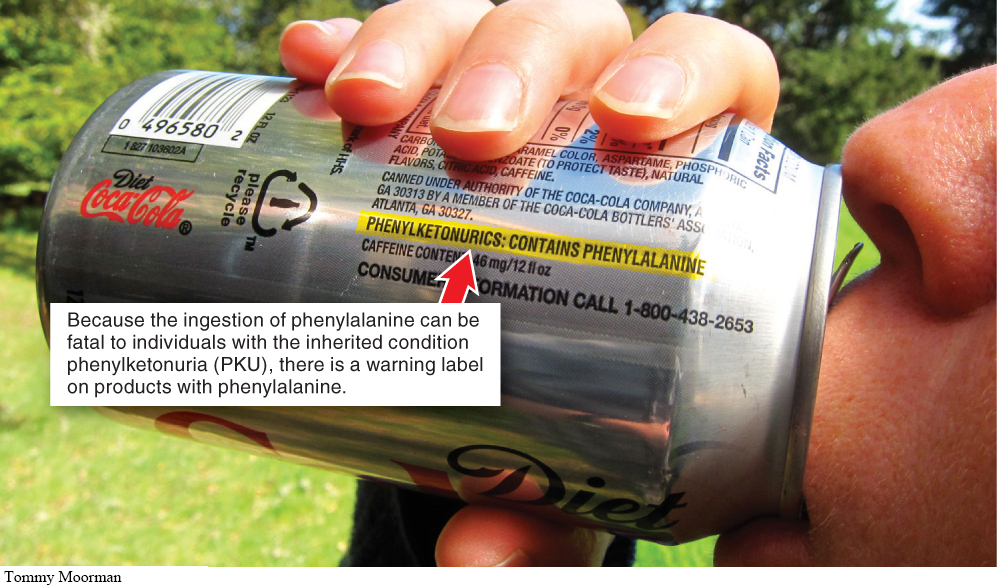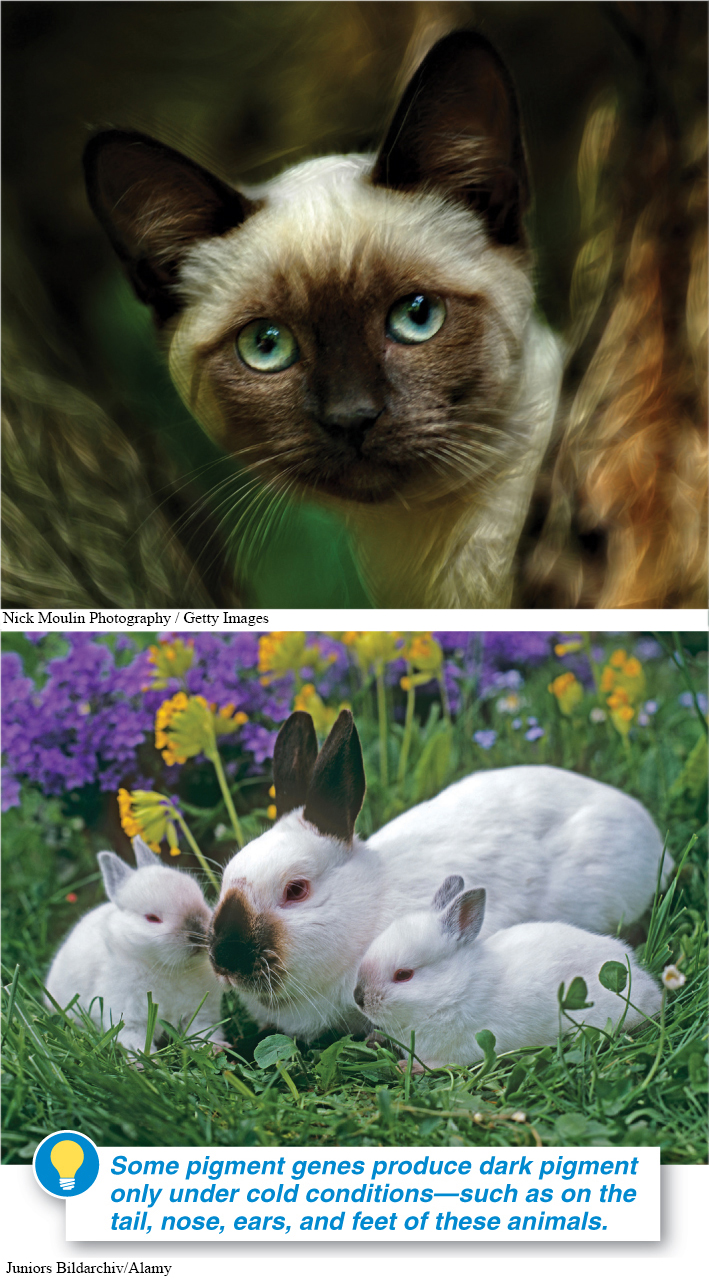It is a very serious warning, in boldfaced capital letters: “PHENYLKETONURICS: CONTAINS PHENYLALANINE.” But it’s not next to a skull and crossbones on a glass bottle in a chemistry lab, it’s on cans of diet soda intended for human consumption (FIGURE 7-26). Most of us either don’t notice the warning or ignore it. Still, it’s always there, and to some people it’s a matter of life and death. What does it mean?

At the most fundamental level, this warning is on products that contain phenylalanine because an organism’s phenotype is a product of its genes in combination with its environment. In this case, specifically, the warning is for people who have a particular genotype that, in the presence of the amino acid phenylalanine, can be deadly.
Sometimes our bodies use phenylalanine directly to build proteins, adding it to a growing amino acid chain. At other times, phenylalanine is chemically converted into another amino acid, called tyrosine. The body may then use tyrosine as one of the building blocks as it constructs proteins, and in a variety of other functions.
The problem is this: at birth, some people carry two copies of a mutant version of the gene that is supposed to produce the enzyme that converts phenylalanine into tyrosine. The mutant gene produces a malfunctioning enzyme, and none of the body’s phenylalanine is converted into tyrosine. Little by little, as these individuals consume phenylalanine, it builds up in their bodies because none of it is converted into tyrosine. If this continues, babies usually begin to show symptoms within 3 to 6 months. Within a few years, so much accumulates that it reaches toxic levels and poisons the brain, leading to mental retardation and other serious health problems. The disease is called phenylketonuria, or PKU.
Here’s where the warning label comes in. By limiting the amount of phenylalanine in their diet (from diet soda and other sources), individuals with the two mutant alleles for processing phenylalanine can avoid the toxic buildup of the amino acid in their brain. In essence, they modify their environment (their diet) so that it contains only a tiny, carefully monitored amount of phenylalanine. Because all newborn babies in the United States are screened for PKU at birth, they can be treated with the appropriate diet immediately. And in an environment free of excess phenylalanine, the PKU mutant alleles are harmless. This example highlights the fact that genes, by themselves, do not “code” for physical characteristics. Rather, genes interact with the environment to produce physical characteristics. Unless you have information about both the genes and the environment, it is not usually possible to know what the phenotype will be.
303
Could you create a temporarily spotted Siamese cat with an ice pack? Why?
A non-

James Watson, the co-
There are thousands of other cases in which genes’ interactions with the environment influence their ultimate effects in the body. The very fact that identical twins—
Because of the role that environmental factors play in influencing phenotypes, DNA is not like a blueprint for a house. There is nearly always significant interaction between the genotype and the environment that influences the exact phenotype produced. The use of this metaphor is problematic to the extent that it suggests the phenotype is determined solely by the genotype. If that were the case, there would be no reason to invest in better schools, physical fitness regimens, nutritional monitoring, self-
TAKE-HOME MESSAGE 7.15
Genotypes are not like blueprints that specify phenotypes. Phenotypes are generally a product of the genotype in combination with the environment.
How do genetics and the environment interact to produce the dark and light coloration patterns of Siamese cats and Himalayan rabbits?
These breeds possess alleles that can produce dark pigment. However, these alleles are heat-sensitive and active only in colder regions of the body such as ears, paws, tail, etc.
304